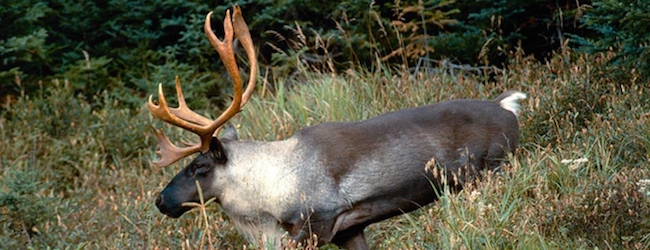
Features
Forestry Management
Harvesting
Counting caribou in Ontario
December 18, 2015 - The caribou populations in Ontario are doing fine. That's the message from the Ontario Forest Industries Association.
The OFIA recently stated that despite declarations by special interest environmental groups that there is a caribou crises in Ontario, a review of Ministry of Natural Resources and Forestry (MNRF) research, scientific evidence, and an assessment of all available and up-to-date data demonstrates that caribou populations are persisting in Ontario.
“Caribou are the most abundant ungulate in North America,” said Jamie Lim, OFIA president and CEO. “Woodland caribou, a forest dwelling variety of the species, is classified as threatened, however they also remain abundant in Ontario and their habitat is well protected. MNRF has made a valiant effort to understand Ontario’s woodland caribou populations, spending $11 million on a massive and productive research effort, with more than 50 projects being conducted by MNRF scientists and biologists, supported by academics and the forest industry.”
“The vast majority of the core range that was occupied in the 1950s is still occupied today,” added Ian Dunn, OFIA’s forest policy advisor. “In northwestern Ontario, the range has significantly extended southward by hundreds of kilometres. On the whole, this is good news for woodland caribou in Ontario - the extent of their habitat has been maintained in most places, and grown bigger in a few spots.
Dunn said that this is partially due to a productive partnership between MNRF and the provincial forestry sector that has been evolving since the mid-1990s, when the “caribou mosaic” was first applied in forest management plans in northwestern Ontario.
"This approach has involved managing the entire landscape in huge patches [blocks of 10,000 to 30,000 hectares] to provide a continuous supply of connected, suitable habitat over the longer term,” he said.
Lim added that numerous population surveys by MNRF suggest that areas subject to forest management have healthier woodland caribou populations than areas that have been entirely left to nature.
“For example, more woodland caribou are being born and surviving form year to year in areas like Nipigon and Kesagami, which are managed by forestry companies, compared to Missisa and James Bay which have little or no disturbance and are to managed by the forestry sector,” said Lim. “This would suggest that there are other factors impacting caribou populations that need to be identified.”
A 2015 Montreal Economic Institute report titled, The Economic Costs of the Boreal Caribou Recovery Plan, questioned why disturbance was the only factor being considered in the long-term health of woodland caribou in Quebec, stating “even if we completely ceased all logging in the caribou’s range of distribution, it is entirely possible that downward population trends would continue because of factors like climate change, forest fires, insect epidemics and hunting.”
“Caribou policy must be based on solid, defendable science that is used in balance with both social and economic considerations, especially in light of what is at stake for hardworking families, the north and Ontario’s renewable natural resource – forestry,” said Lim.
December 18, 2015 By Andrew Snook

Print this page